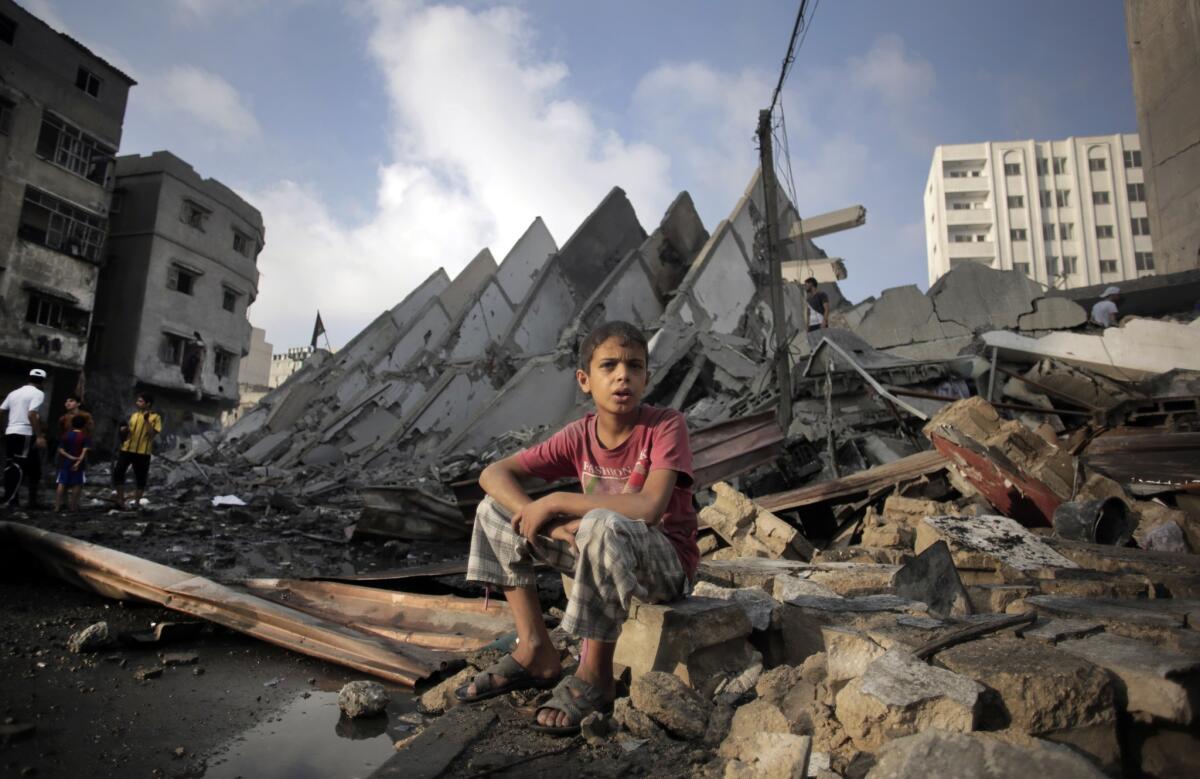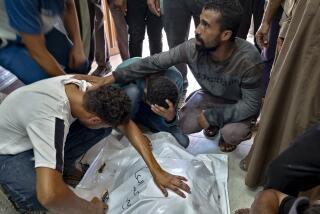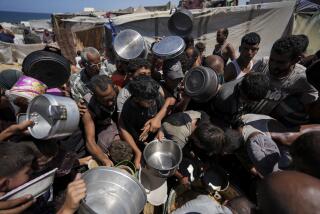With cease-fire in place, difficult talks lie ahead for Israel, Hamas

Reporting from Tel Aviv — An agreement bringing a long-term halt to hostilities between Israel and Hamas may be only the first step in stopping what has been the longest, deadliest and most destructive of three wars the two sides have fought in the last six years in the Gaza Strip.
The two sides reached agreement Tuesday on the open-ended cease-fire, but highly contentious talks lie ahead, and the disputes reflect the vast gulf between Israel and the militant group Hamas, whose charter does not recognize Israel’s right to exist. Substantive negotiations are to begin within a month, but the broader aims of the two sides appear difficult to reconcile.
With word of the Egyptian-brokered truce, thousands of Palestinians poured into the streets of Gaza and the West Bank, many waving the green flag of Hamas to celebrate what was proclaimed to be a victory. Celebratory gunfire rang out, and mosques left undamaged by the fighting blared out calls of “God is great!”
In Israel, the reaction was more muted. Some local officials in Israel’s south, hit hard by weeks of relentless rocket fire, urged residents to stay away from home for the time being, fearful that fighting would resume. Senior figures were at pains to express skepticism that the declared cessation of hostilities would hold.
“We’ve had, unfortunately, a whole series of cease-fires that were violated by Hamas,” prime ministerial spokesman Mark Regev told the BBC. Fighting had stuttered to a halt, this month, only to reignite with renewed fury a week ago.
The seven-week conflict has wreaked far more devastation than previous ones. Huge swaths of Gaza lie in ruins, with more than 2,100 Palestinians killed, most of them civilians, according to United Nations estimates.
International organizations say reconstruction will be an undertaking requiring decades. Even short-term humanitarian needs are dire, with hundreds of thousands displaced, many of them lacking basic necessities such as electricity and clean water.
Israel, in turn, was shaken by the revelation that Hamas had prepared an elaborate network of infiltration tunnels meant to enable large-scale attacks against it. Ceaseless rocket fire exacted a heavy psychological toll, even if the civilian death toll of five on the Israeli side was dwarfed by Palestinian fatalities. And the deaths of 64 Israeli soldiers represented the largest loss of military lives in nearly a decade, since the 2006 conflict with the Lebanese militant group Hezbollah.
The outlines of the accord, by the accounts of those who have taken part in indirect talks over the last week, were strikingly similar to the terms of the cease-fire that ended the last Gaza war, in 2012.
Under it, the blockade of the seaside strip will be eased to allow in humanitarian aid and material for reconstruction, but with strict monitoring meant to ensure that Hamas does not use shipped-in supplies such as cement to embark on another tunnel-building campaign. Palestinian fishermen are to be given an expanded offshore zone of six miles.
But other Hamas demands, such as the building of a Gaza seaport and the reopening of its long-shuttered airport, will be addressed later, after the truce has held for a month. Israel also seeks the remains of slain Israeli soldiers believed to be held by the group, and the disarmament of Hamas, something the group has flatly rejected in the past.
Crucially, Israel is be seeking to empower Palestinian Authority President Mahmoud Abbas, who — in a weighted symbolic gesture — was allowed to give early word of the cease-fire, in a speech delivered before the formal announcement by Egyptian mediators in Cairo.
Israel wants the Palestinian Authority, ejected from Gaza by Hamas in 2007, to regain a strong foothold in the territory, with its forces helping to monitor the crossings in and out of the coastal strip.
Abbas made it clear that he hopes the upcoming round of talks will incorporate attempts to reach a wider and more durable agreement between Israel and the Palestinians.
“What’s next?” he asked in the televised speech announcing the cease-fire. “Should we expect another war after a year or two? ... We want to put our vision for a solution to the international community.”
In Washington, Secretary of State John F. Kerry issued a statement cautiously hailing the truce and promising that the United States would participate in the reconstruction of Gaza, although he pointedly said that it would do so in coordination with Abbas, and not for the benefit of “Hamas and other terrorist organizations.”
Kerry, whose exhaustive efforts at reaching a peace agreement between Israel and the Palestinian Authority came up empty this year, seemed to refer to that when he said, “We are approaching the next phase with our eyes wide open. We have been down this road before and we are all aware of the challenges ahead.”
Even while the final details of the truce were being worked out, the two sides sought to land final blows.
Palestinian militants lobbed dozens of rockets and mortar shells across the Gaza boundary, smashing a family home in the southern city of Ashkelon and sending people in Tel Aviv scrambling to bomb shelters. Less than an hour before the truce took effect, an Israeli man was killed and several people were injured in a strike close to the Gaza boundary, Israeli officials said.
In Gaza, a thunderous predawn bombardment — preceded by warning telephone calls and text messages, together with nonlethal drone strikes — demolished a 15-story apartment and office tower and a high-rise complex containing dozens of shops, offices and cafes. Hundreds of people were left homeless and about two dozen were injured.
Residents fled nearby homes as well, as glass and chunks of concrete rained down, sending aloft enormous clouds of dust and smoke.
The Israeli military did not cite a specific reason for striking the buildings, though it warned over the weekend that any structure used by Hamas or other militant groups could be targeted. Until Saturday, when the first high-rise was toppled, the Israelis had sometimes targeted a particular apartment or office in a tall building, but refrained from leveling it altogether.
During the last week of renewed fighting, Israel also targeted individual Hamas commanders and officials, a practice that was to end under the cease-fire, officials said.
Even as the truce was being cemented, the economic effects of the fighting were being increasingly felt in Israel. On Tuesday, the Bank of Israel cut its benchmark lending rate by a quarter of a point, bringing it to 0.25%. Economists were forecasting a slowdown in economic growth brought on by the conflict, which has damaged tourism and industry in the country’s south.
Twitter: @laurakingLAT
More to Read
Sign up for Essential California
The most important California stories and recommendations in your inbox every morning.
You may occasionally receive promotional content from the Los Angeles Times.










